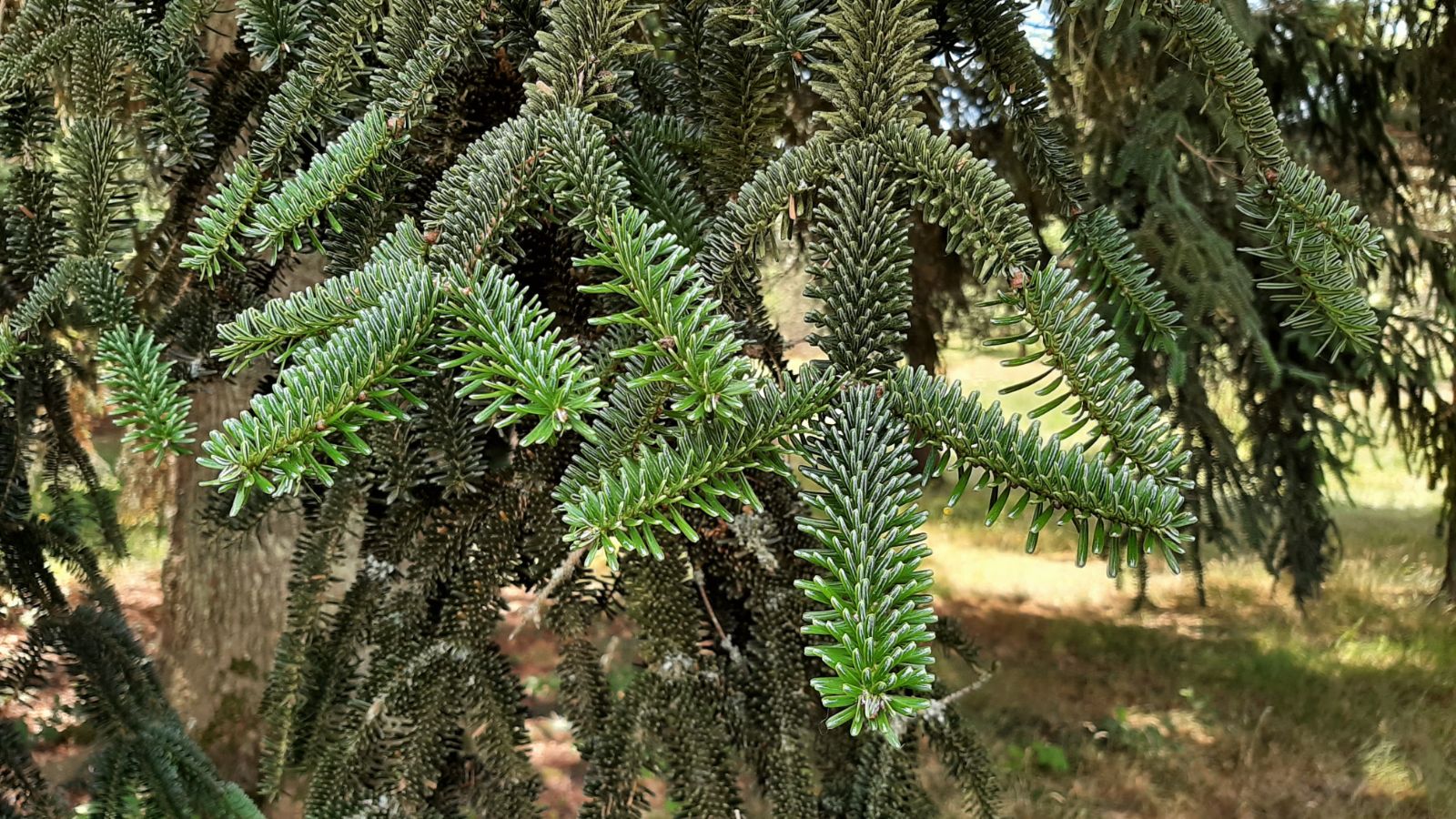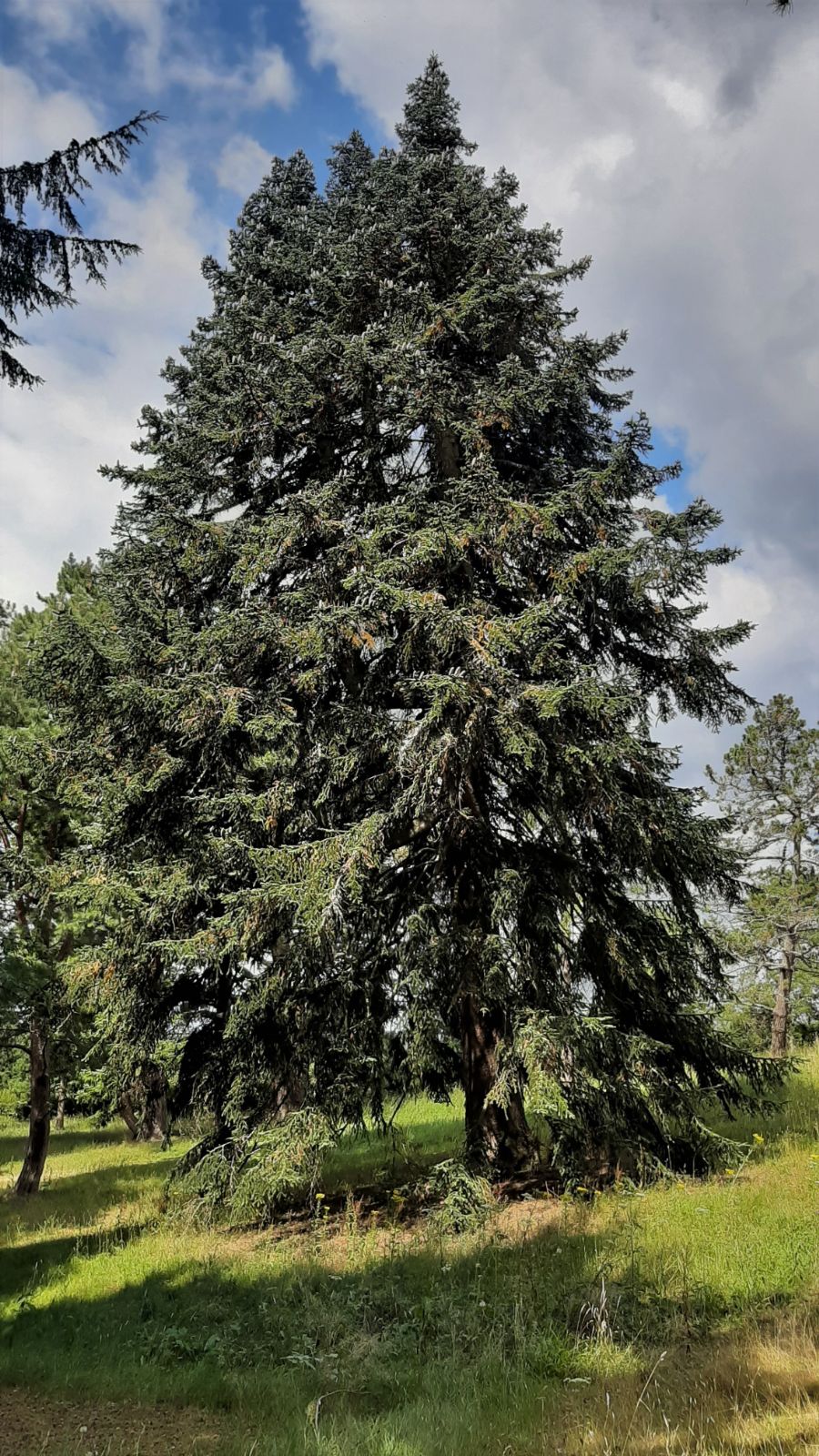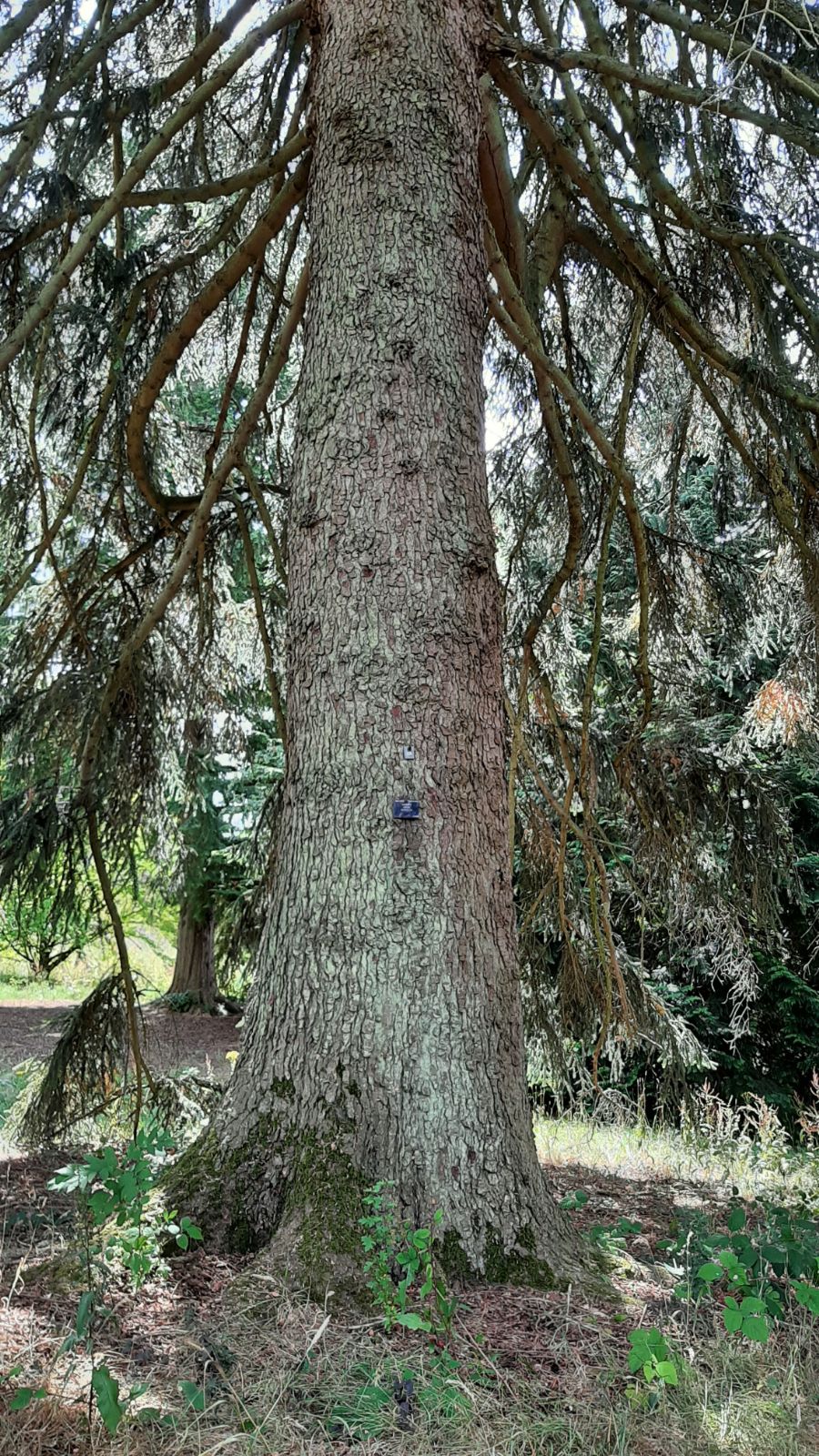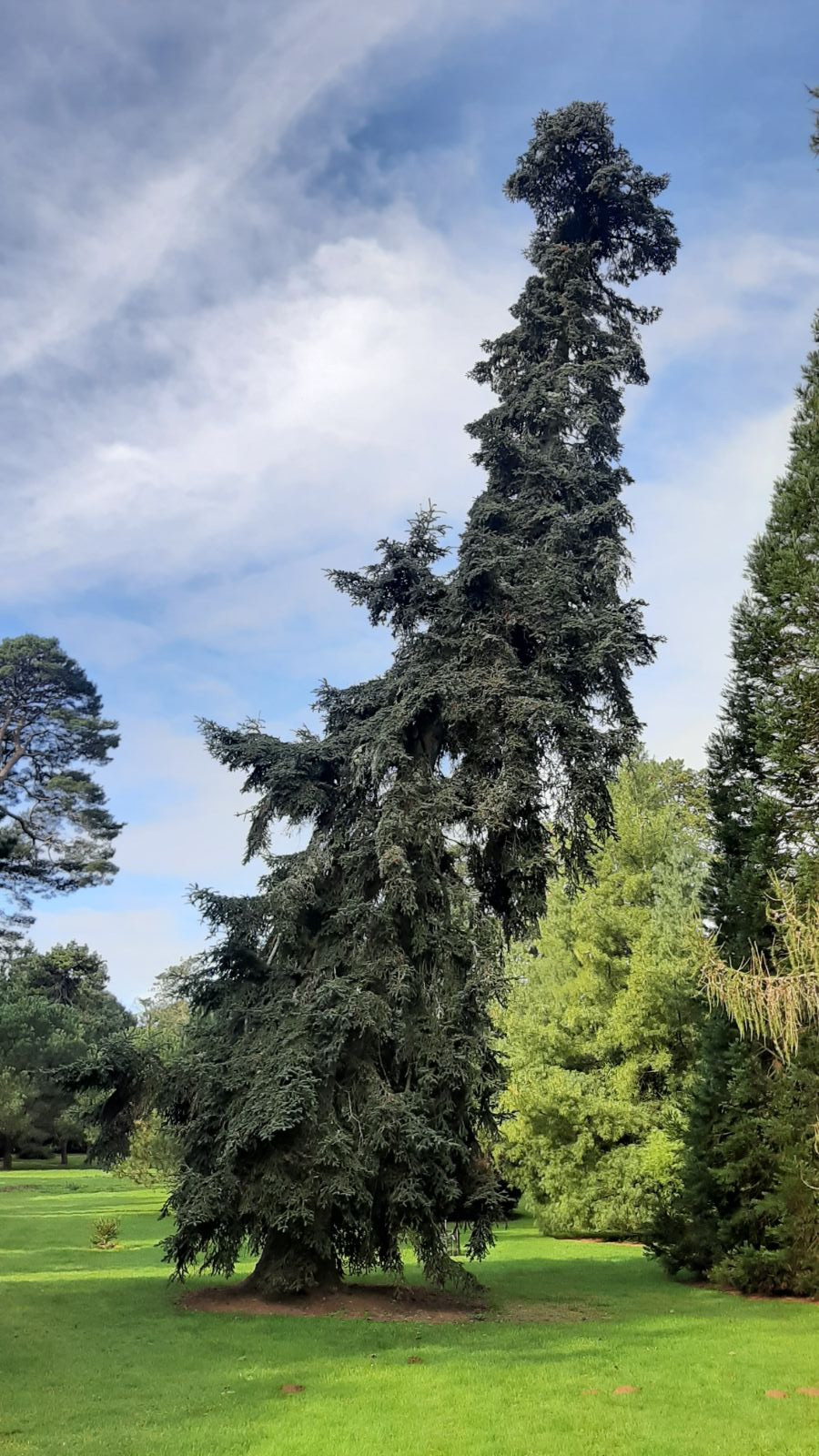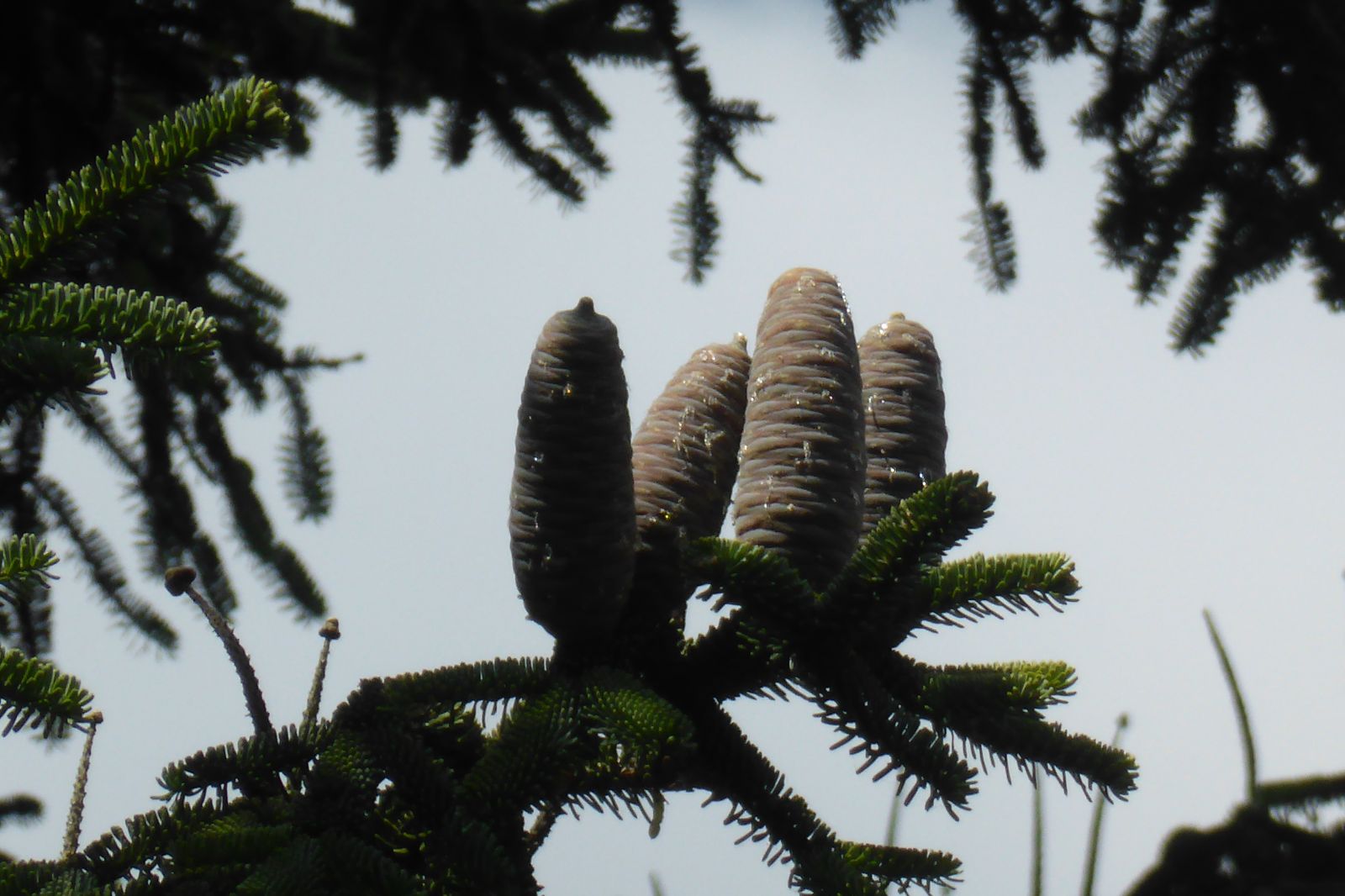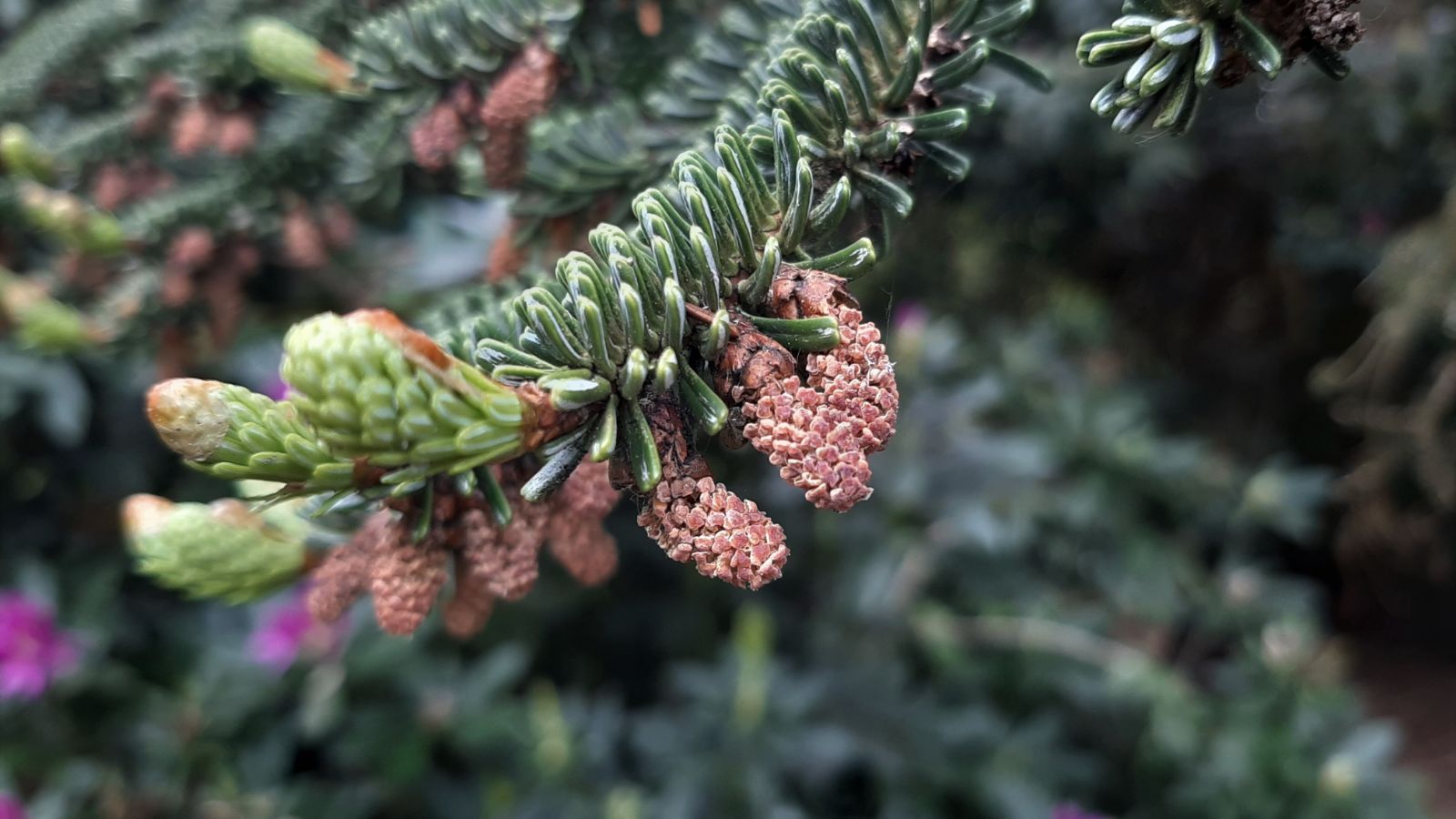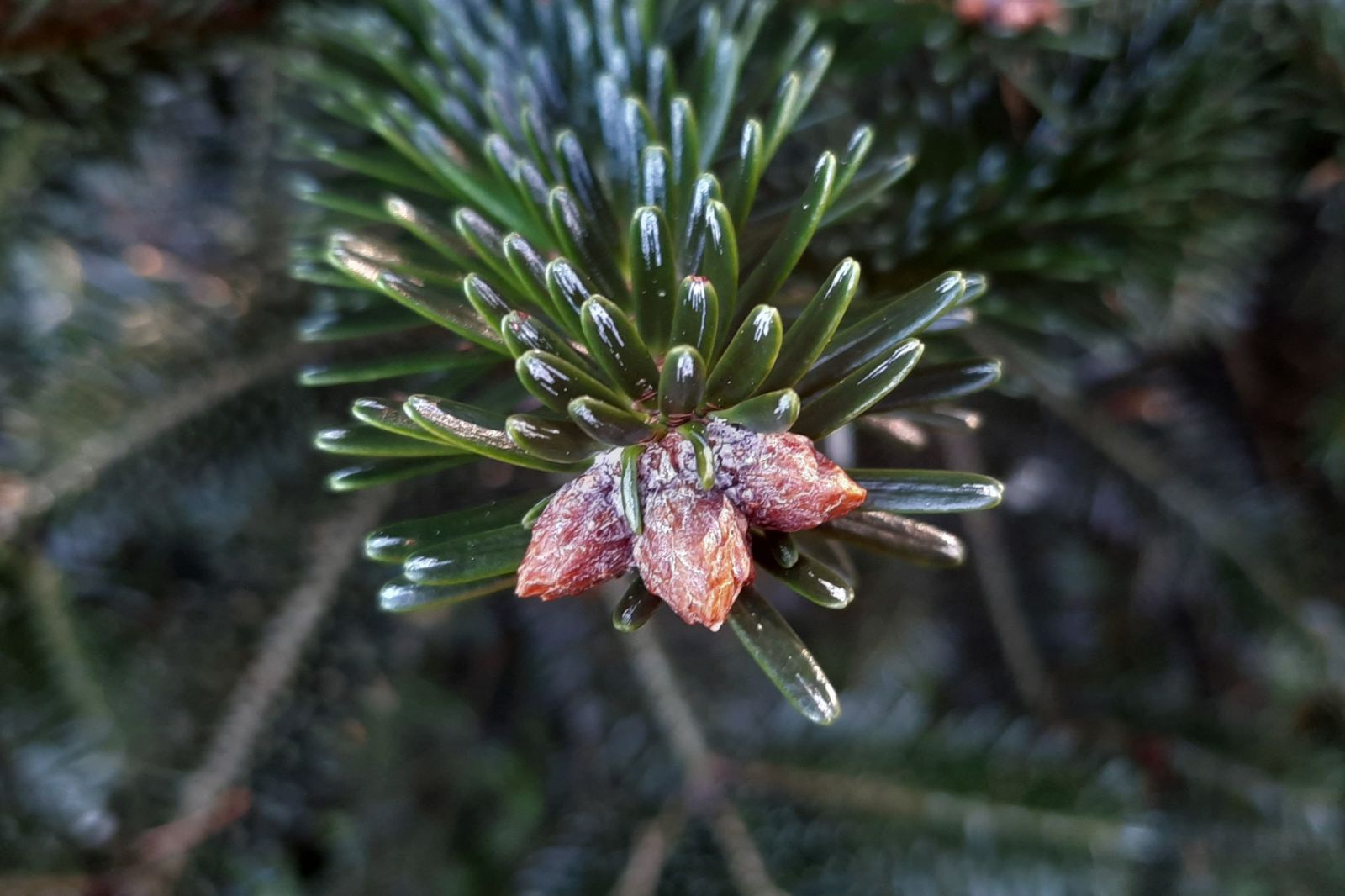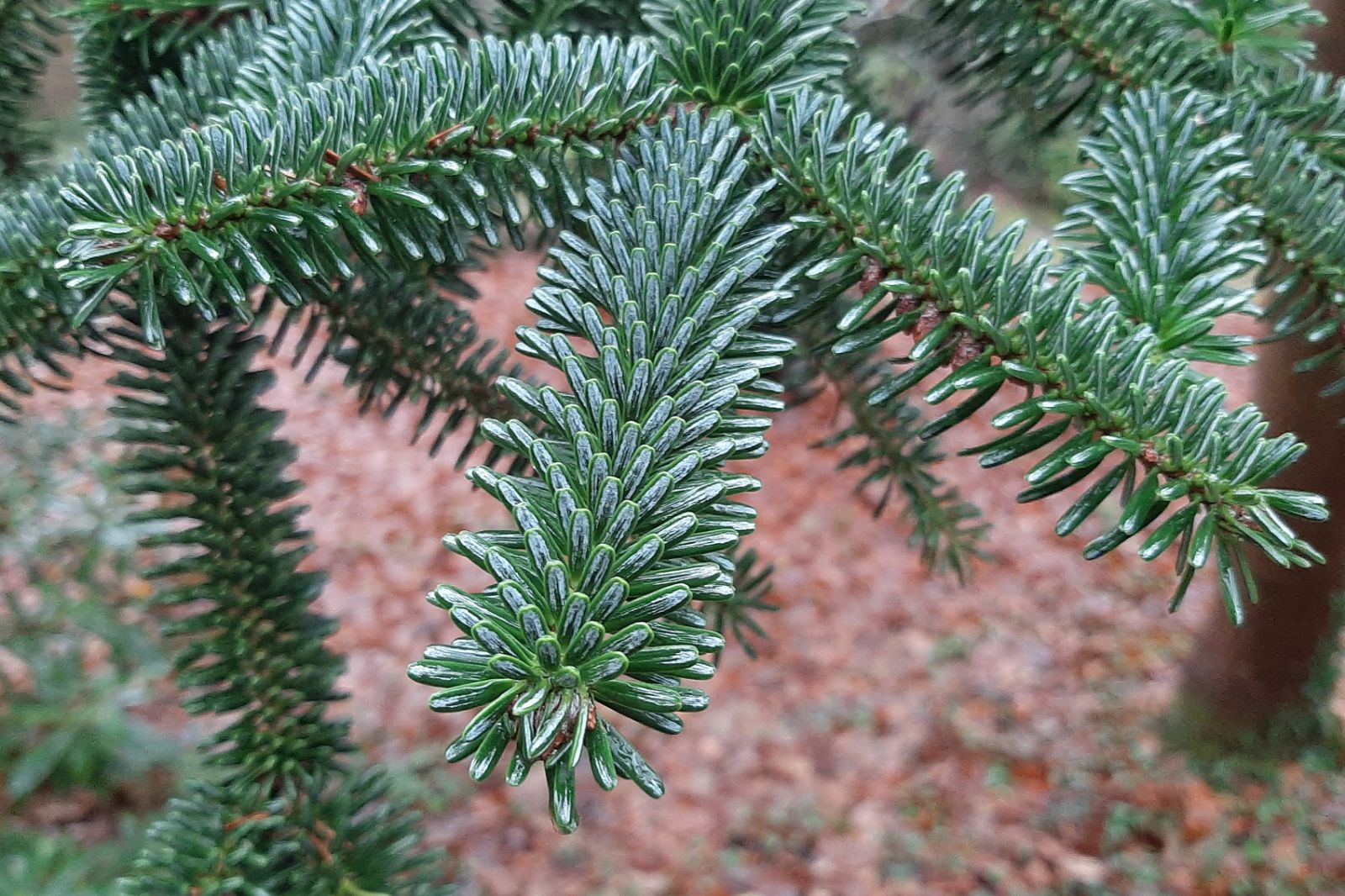Abies numidica
Sponsor
Kindly sponsored by
Sir Henry Angest
Credits
Tom Christian (2021)
Recommended citation
Christian, T. (2021), 'Abies numidica' from the website Trees and Shrubs Online (treesandshrubsonline.
Genus
Common Names
- Algerian Fir
- Mount Babor Fir
- Sapin de Numidie
- Sapin d'Algerie
- Sapin des Babors
Synonyms
- Abies pinsapo subsp. numidica (de Lannoy ex Carrière) A.E.Murray
- Abies pinsapo var. numidica (de Lannoy ex Carrière) Solomon
- Abies pinsapo var. baborensis Coss.
Infraspecifics
Other taxa in genus
- Abies alba
- Abies amabilis
- Abies × arnoldiana
- Abies balsamea
- Abies beshanzuensis
- Abies borisii-regis
- Abies bracteata
- Abies cephalonica
- Abies × chengii
- Abies chensiensis
- Abies cilicica
- Abies colimensis
- Abies concolor
- Abies delavayi
- Abies densa
- Abies durangensis
- Abies ernestii
- Abies fabri
- Abies fanjingshanensis
- Abies fansipanensis
- Abies fargesii
- Abies ferreana
- Abies firma
- Abies flinckii
- Abies fordei
- Abies forrestii
- Abies forrestii agg. × homolepis
- Abies fraseri
- Abies gamblei
- Abies georgei
- Abies gracilis
- Abies grandis
- Abies guatemalensis
- Abies hickelii
- Abies holophylla
- Abies homolepis
- Abies in Mexico and Mesoamerica
- Abies in the Sino-Himalaya
- Abies × insignis
- Abies kawakamii
- Abies koreana
- Abies koreana Hybrids
- Abies lasiocarpa
- Abies magnifica
- Abies mariesii
- Abies nebrodensis
- Abies nephrolepis
- Abies nordmanniana
- Abies nukiangensis
- Abies pindrow
- Abies pinsapo
- Abies procera
- Abies recurvata
- Abies religiosa
- Abies sachalinensis
- Abies salouenensis
- Abies sibirica
- Abies spectabilis
- Abies squamata
- Abies × umbellata
- Abies veitchii
- Abies vejarii
- Abies × vilmorinii
- Abies yuanbaoshanensis
- Abies ziyuanensis
Tree to 20(–25) m tall, 0.5–1 m dbh, taller in cultivation. Crown irregular broad-pyramidal, dense. Bark becoming fissured, breaking into irregularly sized hard plates, dark grey-brown. First order branches retained to the ground in old trees (unless removed), spreading, the oldest down-swept; second order branches spreading horizontally or ascending in the upper crown, grey-brown. Branchlets stout, firm, maturing from greenish-yellow to reddish-brown, glossy, prominently ridged, glabrous. Vegetative buds ovoid or broad-conical, 5 × 4 mm, not resinous or only slightly resinous at base. Leaves radially arranged (somewhat pectinate on shaded shoots), 1–2(–2.5) cm × 2–3 mm, those above the shoot standing vertical or slightly backswept, twisted or curved at base, keeled by a prominent midrib beneath, apex obtuse or faintly emarginate, dark green above, often somewhat glaucous especially near the apex; stomatiferous on both sides, in a prominent patch near the apex and tapering down and either side of the central groove above (less prominent on shaded shoots) in a single band; forming two whitish-green bands below. Pollen cones densely set, 1–2.5 cm long, yellowish. Seed cones short-pedunculate, cylindric, 12–18 cm × 4–6 cm, apex abruptly rounded, somewhat acute or papilliform, pale yellowish-green or reddish grey-green, often tinted lilac and sometimes striated at first, maturing pale purplish brown; seed scales flabellate, 2–3 × 2.5–3.5 cm at midcone; bracts included at maturity, or rarely just exserted near the base of the cones. (Farjon 2017, Debreczy & Rácz 2011, Yahi et al. 2019, Liu 1971).
Distribution Algeria Sétif Province, Djebel Babor Mountains.
Habitat A single population with a very restricted range, occurring at 1850–2000 m asl, typically on steep north and east facing slopes on calcareous substrate. Woody associates include Cedrus atlantica, Quercus faginea, Acer obtusatum, Populus tremula, Sorbus aria, Sorbus torminalis and Daphne laureola.
USDA Hardiness Zone 6
RHS Hardiness Rating H7
Awards AM (1976, 1987)
Conservation status Critically endangered (CR)
Abies numidica is the only Abies species endemic to the African continent. It grows in the extreme north, in the mountains of northern Algeria close to the Mediterranean coast. According to Elwes and Henry A. numidica ‘was discovered in 1861 by Captain de Guibert. The first seeds were sent to France in 1862 by M. Davout, a forest officer; and another supply and six young plants were forwarded in 1864 by M. de Lannoy’ (Elwes & Henry 1906–1913). Plants raised from these seed batches must have been the source of the first trees planted in collections not just in France, but presumably in other European nations, too, for the species arrived in England as early as 1865 (Jacobson 1996) and was planted at Pampisford, Cambridgeshire, only two years later (Mitchell 1972).
Elwes only explicitly referred to two ‘originals’, both at Verrières near Paris (Elwes & Henry 1906–1913), but most planting dates have been lost and mature trees are difficult to date. Further seed, and probably further plants, no doubt soon followed the introductions of 1862 and 1864 and the species gradually became more widely available, though never abundant, in the nursery trade. Writing in 1972 Mitchell only recorded 26 trees of note from the UK and Ireland, but he piled praise on Algerian Fir calling it ‘A very sturdy species with a period from about tenth to fiftieth years of steady growth in height, to 2 feet [0.6 m] annually, and very rapid increase in girth. Remarkably healthy, luxuriant tree in most areas; probably the most resistant of the genus to polluted air’ (Mitchell 1972). It is clearly an amenable tree in cultivation for it is not affected by a harsh climate, and excellent examples grow all over the UK and Ireland, including in some very cold collections in the Highlands of Scotland, and in some very warm ones such as Kew. Farjon was wrong to suggest ‘it is sensitive to low temperatures in winter and to air pollution in urban environments’. Intriguingly, he adds that ‘It is mostly cultivated in countries around the Mediterranean Sea, where it is sometimes planted in hedges as it takes trimming well’ (Farjon 2017).
Algerian Fir is one of few members of the genus that truly thrives on chalk – a fact attested to by the handsome specimen at Pampisford. It was introduced to North America during or before 1897 and became commercially available there ten years later (Jacobson 1996). In North America it has always been a rare tree, even more so than in Europe, and it may be even rarer than it first appears due to problems with identification: ‘There may be a mix up, with misidentified stock prevailing […] Whether or not the trees being sold are purebred, or labelled correctly, they do make thrifty, desirable landscape specimens’ (Jacobson 1996). Here Jacobson is hinting at a widespread problem with the Abies species of the Mediterranean basin – their propensity to hybridise with one another in cultivation. If the first seed introduced to North America was sourced from trees cultivated in European collections, rather than from the wild, then they will almost certainly have been hybrids as Jacobson suspects.
We know that in the late 19th and early 20th centuries European nurseries sourced seed for raising new stock from cultivated trees, as well as from consignments sent from the wild, and this poses the question of how many extant trees are genuine. During research for this account a batch of trees at the Yorkshire Arboretum, UK, grown from seed obtained from the Italian firm Barilli & Biagi in the late 1970s, were all found to be hybrids involving either A. cephalonica or A. nordmanniana, with little evidence for the involvement of numidica at all! (pers. obs. July 2020).
Farjon (2017) rightly points out that the species ‘is becoming rare [in collections] since dead trees are scarcely replaced with good stock from wild collected seed’, and it seems most unlikely that all 58 trees recorded by the Tree Register in the UK and Ireland are genuine. It is likewise inevitable that some of the 71 collections that reported A. numidica for BGCI’s survey of ex-situ conifer collections (Shaw & Herd 2014) will be growing impostors. Weeding these out is rendered somewhat more complicated by the fact that horticulture’s idea of what Algerian Fir should look like is very narrow anyway, because it has always been based on a small sample set. In attempting to allow for this, it is all too easy to over-compensate, and fail to subject trees to proper scrutiny. Perhaps the most reliable means of identifying this species is seeking out a unique combination of characters: the arrangement of stomata on the upper surface of the needles, which is distinctive as described; the assurgent foliage, the needles atop the shoot standing vertical or almost backswept and those at the side somewhat facing inwards, the overall effect being somewhat akin to an amphitheatre with the leaves facing the shoot (cf. the radial arrangement of A. pinsapo).
Currently, the only way to obtain genuine material to increase cultivated stock is to graft confirmed trees. Obtaining wild-sourced seed has been impossible in recent years due to the political and security situations in Algeria. With the species now classified as Critically Endangered, however, there is a compelling case for action to source and establish a new generation of known-origin Algerian Firs in reputable ex-situ conservation collections alongside enhanced protective measures in the wild.
Abies numidica Hybrids
Curiously, although there are multiple documented hybrids involving A. pinsapo (e.g., A. × insignis, A. × vilmorinii) there are barely any documented hybrids of A. numidica. These surely exist, but perhaps the influence of A. numidica has been mistaken for that of the more familiar (and very similar) A. pinsapo, hence they have been overlooked in literature.
- Abies pardei is, possibly, one such example. Gaussen described it in 1929, based on cultivated trees at the Arboretum des Barres, France, originally labelled A. numidica (Bean 1976). Nowadays the name A. pardei is usually considered synonymous with A. alba (e.g. Farjon 2001), but Bean noted some alternative theories, including that it perhaps represented a hybrid between A. numidica and A. pinsapo, but Bean also observed that Gaussen himself considered it ‘close’ to A. alba (Bean 1976). Gaussen’s own observation may have lent credence to the prevailing view that it is nothing more than a synonym of A. alba, however, trees seen during research for this account at the Sir Harold Hillier Gardens, UK, suggest a more likely parentage of A. numidica × A. alba (pers. obs. 2020). The fact that the original des Barres trees were labelled A. numidica certainly should not be ignored, and further investigations, both of the name A. pardei and the trees that bear it, are required to determine its true identity and status. Another suspected cross, between A. numidica and A. nebrodensis, is discussed under A. nebrodensis Hybrid.
'Glauca'
Naming ‘blue’ forms of species that are naturally inclined to be glaucous inevitably leads to confusion. Just as A. procera ‘Glauca’ is supposed to represent the blulest of the blue, so too is the ‘Glauca’ of A. numidica. Its blueness may have been striking when it was first selected at the Arboretum des Barres in France in 1909, but a century hence the picture has been somewhat muddled by the introduction of other ‘blue’ forms under this name, which might have appeared perfectly blue to the horticulturists who selected them, but which in reality may not match the intensity of the original. The original A. numidica ‘Glauca’ is set apart not only by its blueness, but by its leaves distinctly shorter than in the typical species (Krüssmann 1985; Auders & Spicer 2012). These characters should help to weed out impostors both in the trade and in collections, which are often rendered glaucous only by a broader-than-average stomatal band on the upper leaf surface; the leaves themselevs are usually full-size.
'Lawrenceville'
At least two very different clones are circulating under the name A. numidica ‘Lawrenceville’: one is a conical tree of typical vigour with silvery-blue leaves, raised from seed collected from a cultivated plant of A. numidica in New Jersey; the other is a dwarf, possibly propagated from a witches’ broom of the former (Auders & Spicer 2012). It is highly likely that open-pollinated seed will have yielded hybrids (see also A. numidica Hybrids) and the original ‘Lawrenceville’ may not belong to A. numidica at all; it is listed here for ease of reference until such time as its status can be confirmed. The original ‘Lawrenceville’ grows at Skylands, New Jersey (Auders & Spicer 2012).
'Pendula'
Krüssmann (1985) described this selection as slow-growing, ultimately only 3–4 m high, however much larger examples are known including a tree in the Sir Harold Hillier Gardens, UK, 13.8 m in 2017 (Tree Register 2020) but barely discernable as pendulous now (pers. obs. 2020). Such dimensions are likely only possible with careful staking and judicious pruning in youth (Auders & Spicer 2012). Typically only the youngest side branches are pendulous, and ‘nodding’ would be a better description than ‘pendulous’; this cultivar is not nearly so pendulous as the ‘Pendula’ of A. alba and A. nordmanniana, for example.

